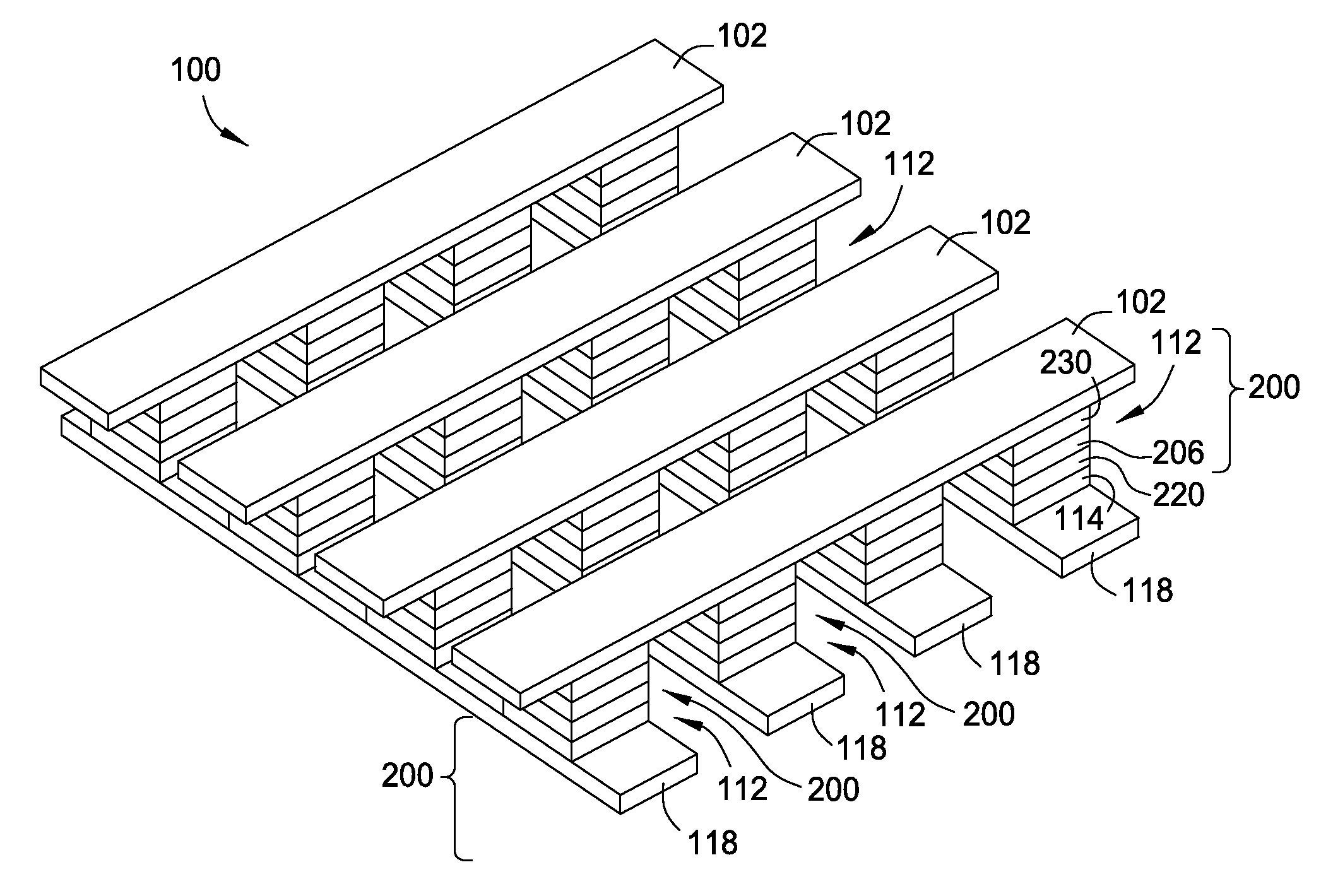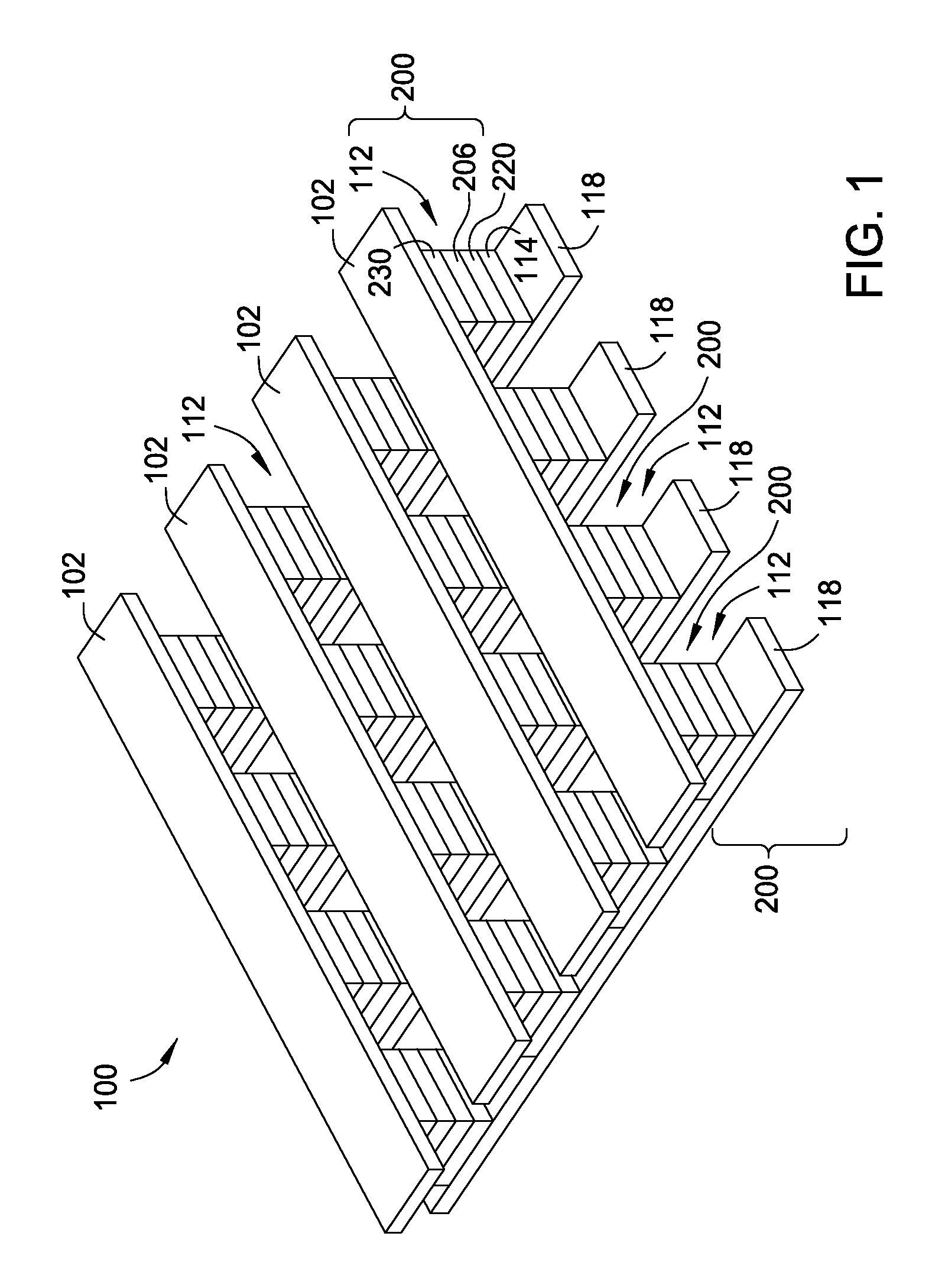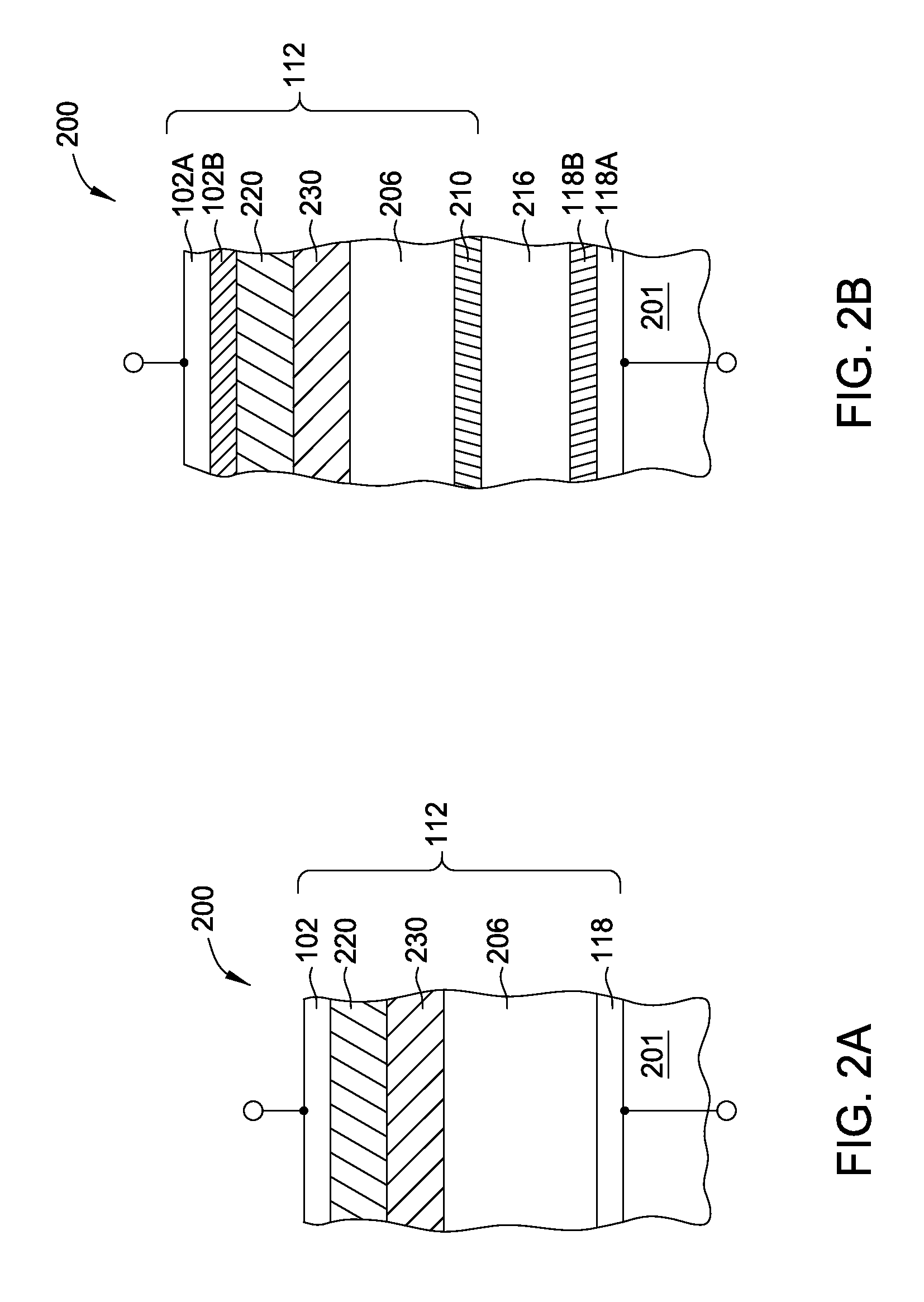Current-limiting layer and a current-reducing layer in a memory device
a memory device and current-limiting layer technology, applied in the field of resistance switching memory devices, can solve the problems of undesirable alteration or disturbance of the “logic” state of the interconnected memory cells/devices, the current flowing through the current carrying lines in the memory array, and the scaling issue of traditional nonvolatile memory technology, etc., to minimize the overall power consumption of the memory array and reduce the level of current flowing
- Summary
- Abstract
- Description
- Claims
- Application Information
AI Technical Summary
Benefits of technology
Problems solved by technology
Method used
Image
Examples
examples
[0124]In accordance with one or more embodiments of the invention, a process of forming the memory device 200 includes forming a resistive switching memory element 112 having an intermediate electrode layer 210 comprising an n-doped polysilicon layer, a variable resistance layer 206 that is about 50 Å thick and comprises hafnium oxide (HfxOy), a current-reducing layer 230 that comprises aluminum doped hafnium oxide (doped HfxOy) at a thickness of between about 5 Å thick about 20 Å thick with a resistivity of about 2 Ω-cm and a current-limiting layer 220 that comprises hafnium nitride (HfxNy) at a thickness of between about 50 Å and 200 Å with a resistivity of between about 10 Ω-cm and an electrode 102 that comprises a layer of titanium nitride (TiN). After forming the memory device 200, optionally at least one thermal processing step is performed to activate the materials within layers and enhance adhesion between the layers.
[0125]In another example of a memory device 200, the resis...
PUM
 Login to View More
Login to View More Abstract
Description
Claims
Application Information
 Login to View More
Login to View More - R&D
- Intellectual Property
- Life Sciences
- Materials
- Tech Scout
- Unparalleled Data Quality
- Higher Quality Content
- 60% Fewer Hallucinations
Browse by: Latest US Patents, China's latest patents, Technical Efficacy Thesaurus, Application Domain, Technology Topic, Popular Technical Reports.
© 2025 PatSnap. All rights reserved.Legal|Privacy policy|Modern Slavery Act Transparency Statement|Sitemap|About US| Contact US: help@patsnap.com



